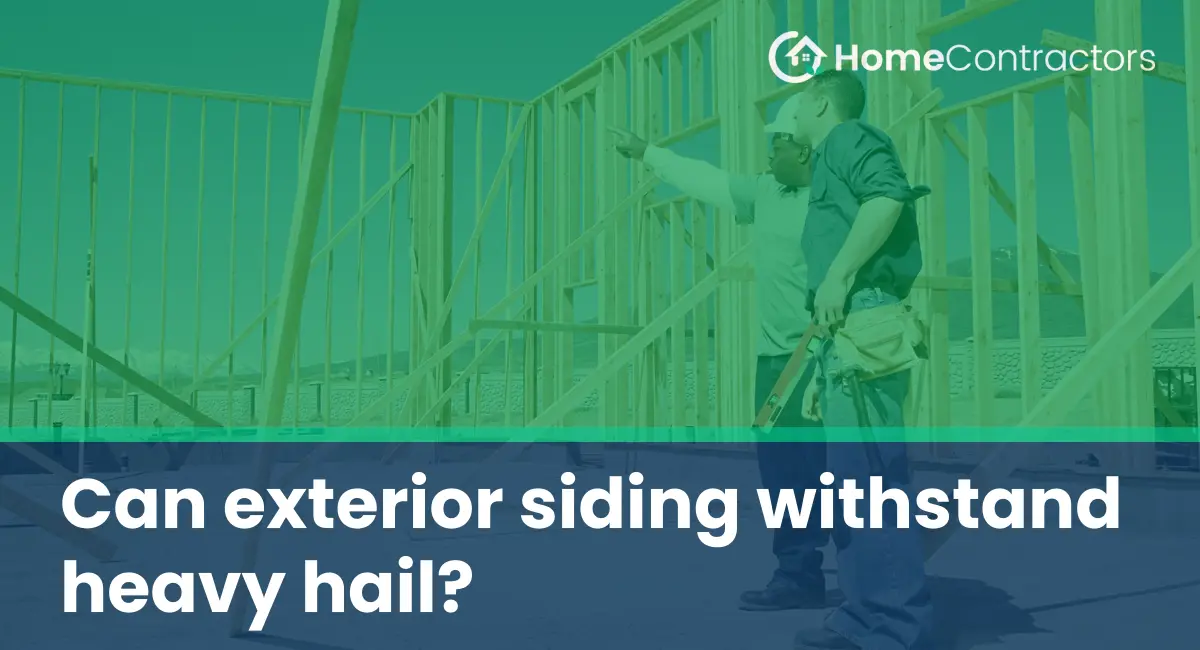When it comes to protecting our homes from the elements, exterior siding plays a crucial role. One element that can pose a significant threat to the durability of siding is hail. In areas prone to severe hailstorms, homeowners often wonder if their siding can withstand the impact. In this article, we will explore the resilience of exterior siding when faced with heavy hail, discussing different types of siding materials and their ability to withstand hail damage.
Understanding the Impact of Hail:
Hail is formed when thunderstorm updrafts carry raindrops upward into extremely cold areas of the atmosphere, causing them to freeze. As these frozen raindrops are lifted and fall back down, they gather additional layers of ice, becoming hailstones. Depending on their size and density, hailstones can range from small pellets to large, destructive spheres. The impact of hailstones can result in substantial damage to unprotected surfaces, including siding.
Different Types of Siding Materials:
1. Vinyl Siding:
Vinyl siding is one of the most popular choices for homeowners due to its affordability and versatility. It is made of a resilient polyvinyl chloride (PVC) material that can withstand moderate hailstorms. However, in the face of heavy hail, vinyl siding may not provide adequate protection, as large hailstones can crack or penetrate the material.
2. Fiber Cement Siding:
Fiber cement siding is a durable option that consists of a mixture of cement, sand, and wood fibers. This type of siding offers better resistance to hail damage compared to vinyl siding. Its thick and robust composition helps to absorb and distribute the impact of hailstones, reducing the risk of cracks or punctures.
3. Metal Siding:
Metal siding, often made of aluminum or steel, is highly resistant to hail damage. Metal can typically withstand heavy hailstorms without experiencing significant damage. However, very large hailstones or extremely strong impacts may dent or scratch the surface of the metal siding.
4. Wood Siding:
Wood siding, such as cedar or redwood, is more susceptible to hail damage than other types of siding materials. Hailstones can cause cracks, dents, or splintering in the wood, compromising its overall integrity. Additionally, wood siding requires regular maintenance, including sealing and painting, to protect against moisture damage caused by hail.
4. Fiberboard Siding:
Fiberboard siding, made from compressed wood or cellulose fibers, is generally not as resilient as other siding materials when it comes to hail. Fiberboard may absorb moisture from the hail, leading to swelling and warping. It is important to note that fiberboard siding should be properly sealed and protected to reduce the risk of hail damage.
Protective Measures:
While exterior siding materials differ in their ability to withstand heavy hail, homeowners can take several preventive measures to minimize potential damage:
- Add an extra layer of protection: Consider installing impact-resistant siding or adding a layer of hail-resistant underlayment beneath the siding to provide an additional barrier against hailstones.
- Regular maintenance: Regularly inspect and maintain your siding to ensure it is in good condition. Repair any cracks, loose pieces, or damaged sections promptly.
- Trim surrounding trees: Trim trees near your home to minimize the risk of falling branches or limbs during a severe hailstorm. This helps to avoid additional damage to the siding.
- Use hail guards: Install hail guards over vulnerable areas, such as windows, doors, and outdoor air conditioning units, to provide extra protection against hail impact.
While exterior siding can withstand moderate hailstorms, heavy hail poses a significant risk to its durability. The type of siding material can greatly impact its resistance to hail damage, with metal and fiber cement siding generally offering better protection compared to vinyl or wood siding. Homeowners should consider the specific climate and frequency of hailstorms in their area when choosing siding materials. By taking preventive measures and regular maintenance, homeowners can enhance their siding’s ability to withstand heavy hail while protecting their homes from potential damage.
